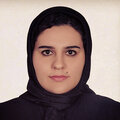Journal Article
Prevalence and trend of periodontal diseases in Iran from 1990 to 2017: a national study
Introduction and aims
Periodontal diseases are significant public health challenges, affecting millions globally. This study aimed to analyze the national and subnational trends of periodontal diseases in Iran from 1990 to 2017.
Methods
A comprehensive analysis was conducted using data from national health surveys, the Behvarz Health Study, and published literature from 1990 to 2017. The Age-Spatial–Temporal (AST) Bayesian hierarchical model was employed to estimate the prevalence of bleeding on probing (BOP), shallow pocket (SP), and deep pocket (DP), adjusting for covariates such as age, sex, education, and socioeconomic factors.
Results
From 1990 to 2017, the age-standardized prevalence of BOP increased significantly by 73.77%, from 27.11% (95% UI: 22.86%-31.36%) to 47.11% (95% UI: 40.11%-54.12%). Similarly, SP prevalence rose by 70.01%, from 14.34% to 24.38%. Conversely, DP prevalence declined by 69.27%, from 8.98% to 2.76%. Geographic disparities were observed, with provinces such as Tehran and Sistan and Baluchistan experiencing contrasting burdens. Trends highlighted increasing BOP and SP prevalence among younger populations.
Conclusion
The study underscores the growing burden of BOP and SP in Iran, reflecting inadequate preventive measures and healthcare disparities. The findings highlight an urgent need for policy reforms prioritizing preventive care, equal access to dental services, and targeted interventions addressing socioeconomic and geographic inequalities. More focus should be put on training mid-level or intermediary oral health providers.




